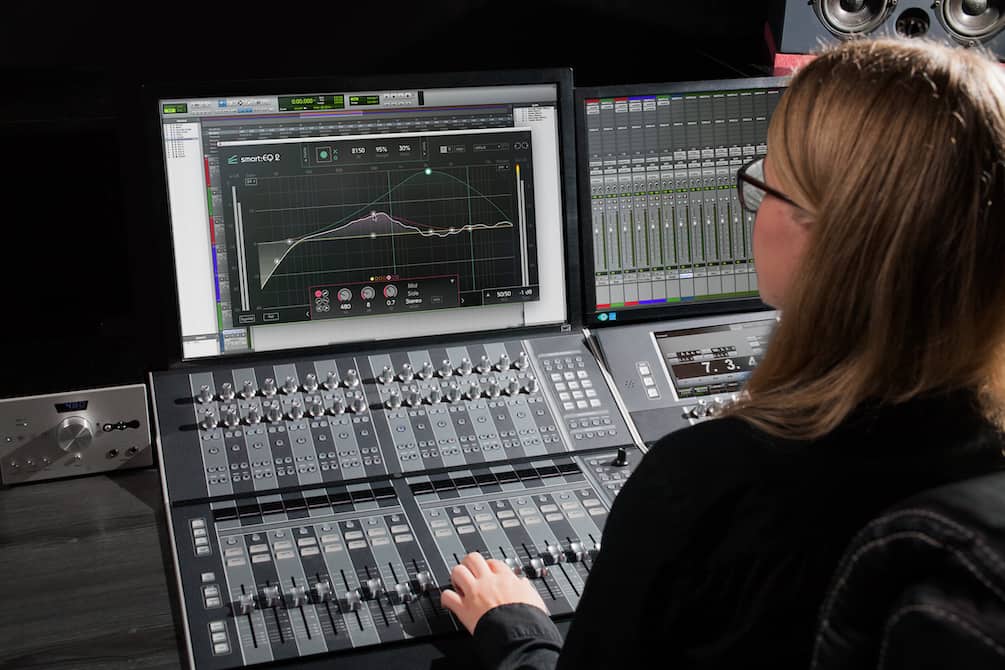Fabfilter has been doing this right for quite some time now. The original version was released in 2011 and introduced the audio world to a completely different way of looking at EQ. It combines the slopes, shelves and accuracy of a 24 band EQ with the graphical rendering of the frequency spectrum. Copied by many plug-ins since but never bettered, Pro Q reaches version 3 and brings with it more innovation.
Pro-Q 3 features every type of filter shape with Bell, Notch, High and Low cuts and shelf including a Tilt Shelf and a Flat Shelf. Or you can create your own shapes with simply clicking and placing the nodes yourself. A new Dynamic Mode intelligently adds compression or expansion to any selected bands. You can process just either side or the middle of your stereo field or expand out to surround sound mixing.
The spectrum analyzer has been improved and now features a “Spectrum Grab” to help you respond to and adjust peaks directly. There’s also communication between instances of Pro Q-3 which looks for collisions between the content of different tracks or applying the EQ from one instance onto another.
Pro-Q 3 can be every sort of EQ and displayed in such a way that a beginner can start crafting a better mix of frequencies by working with the visualization.
Pros & Cons
- Looks amazing
- Comprehensive
- Dynamic mode
- Overwhelming
- There are better dynamic EQs
Street Price: $179
Format: VST, AU, AAX
Fabfilter Pro-Q 3
